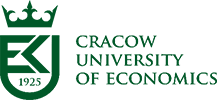Investigating neighbourhood concentration of immigrants in Poland: explorative evidence from Kraków
This study contributes to research on new immigrant destinations in CEE by investigating the neighbourhood concentration of immigrants in Poland. The focus is on Kraków – the second largest city – for which we have built a unique register-based dataset containing geocoded individual level data. To our knowledge, it is the first high-quality dataset of this type, prepared and used for research purposes in Poland. We use it to describe immigrants’ spatial allocation at a relatively early stage of immigration using the kNN approach.
The results show that whereas foreigners compose around 4.2% of city population, 50% of the city inhabitants live in the 200 kNNs with a share of foreigners below 2.2%. The DI for the immigrants is 0.45. Yet, a relatively high concentration could be seen among foreigners from Asia and America. However, immigrants from Ukraine and other Eastern European, non-EU countries are much more evenly spread around the city.
New FUME research on neighbourhood concentration in Poland by Marcin Stonawski, Jan Brzozowski, @KPedziwiatr @marinageorgati. Read it here: https://t.co/bUJldlLjFG @krakow_pl pic.twitter.com/q6BPiQWVVU
— Future Migration Scenarios for Europe (@fume_eu) April 11, 2023
To cite this publication:
STONAWSKI, Marcin, BRZOZOWSKI, Jan, PĘDZIWIATR, Konrad & GEORGATI, Marina. Investigating neighbourhood concentration of immigrants in Poland: explorative evidence from Kraków. Bulletin of Geography. Socio-economic Series [online]. 28 June 2022, nr 56, s. 143–159. DOI 10.12775/bgss-2022-0019.









